There’s never been more access to poker and the card game has never been so popular. Poker is a globally-loved mind sport, offered online and offline. A televised poker tournament in 2003 ushered in a new era of popularity for the card game. The endless complexity of the game makes it more like chess and less like other card games.
Turning a few dollars into millions using keen decision-making and instincts entices more players every day. In this article, we’re giving an overview of how to play poker, including the next steps in the journey for new players.
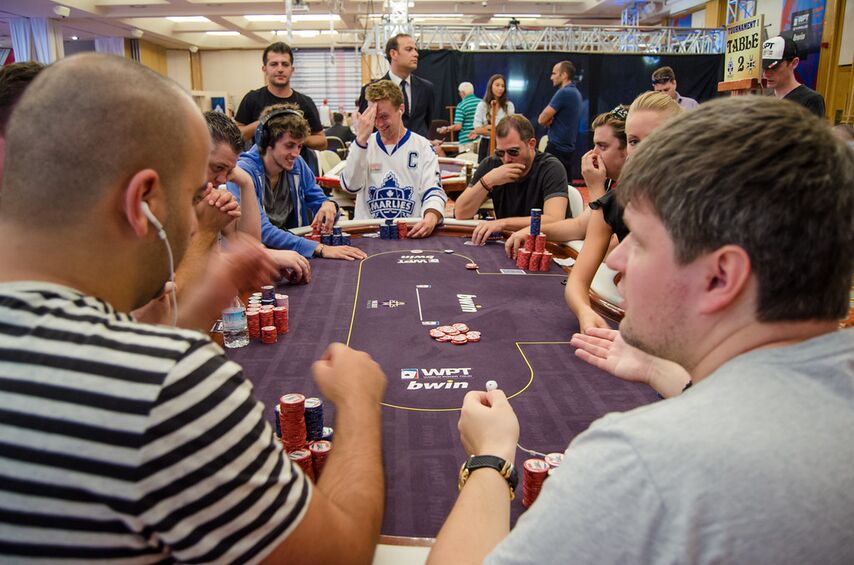
The Basic Rules Of Poker Games
The rules of this game might seem baffling at first. After playing through a few hands at home or with free-play software, everything will become more apparent. These rules apply to Texas hold ‘em and Omaha games.
Winning in poker is defined as collecting the chips in the pot and by doing that, increasing our profit. There are two ways to do this.
1. Creating A Winning Combination Of Cards
When your combination of cards has a higher rank than your opponents at the end of the hand, you win the hand and the chips in the pot. We’ll talk about hand rankings further down in this article.
2. Influence Your Opponent To Fold Their Hand
Having a strong hand is ideal, but you’ll quickly find out that doesn’t always happen. We often need to win with weak hands, by using betting. Bet enough, at the right time, and your opponent might fold their hand. Waiting for premium hands is a losing strategy, you can still collect a profit without strong hands.
This is what’s known as a “bluff”. It’s difficult to correctly time a bluff. Skilled players use betting as a form of storytelling, representing a strong hand to influence their opponent.
The situation changes when there are multiple players, and getting all of them to fold might be difficult.
How The Blinds Work In Poker
Blinds have nothing to do with eyesight. They are mandatory bets, paid by two players each hand. The players who pay the blinds will change each hand, moving clockwise around the table. In poker, blinds create action by putting money in every pot, and they also dictate the flow of the game.
Blinds will automatically be taken from your stack online, but you’ll have to do it yourself for live games.
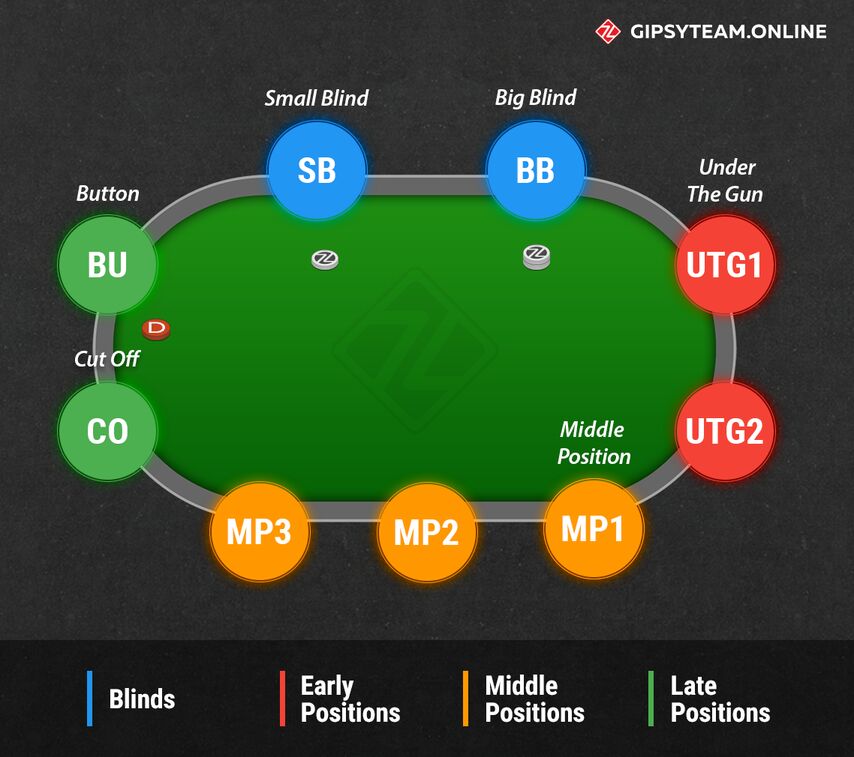
After the blinds have been put on the table, the hand can begin. After shuffling before each round, the dealer will send cards to each player. The first card always goes to the small blind position.
The 4 Betting Rounds And The Showdown
Poker players have four opportunities to bet during each hand, called betting streets or rounds. That doesn’t mean there will always be betting. Sometimes nobody will bet, players can check if they don’t want to bet into the pot. We’ll talk more about betting and checking after we discuss the betting rounds and showdown.
Each street is significant, and there are different strategies for each one. During each betting round, you will learn more about your opponents’ hands. Make sure to remember who is betting, how much they are betting, and when they are betting.
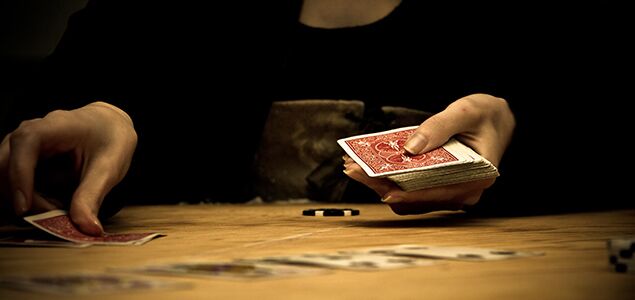
Pre-Flop
During this crucial betting round, players have cards without seeing any of the community cards. That means that betting during the pre-flop stage is based only upon a player’s holdings and their position at the table.
The player in the UTG 1 position begins the pre-flop round. Players must choose from 3 actions during the pre-flop stage.
| Fold/Pass | If you don’t want to continue, fold your hand. The dealer will take your cards and you will rejoin the action next round. |
Call | To enter the action, call the required amount. Unless there was a raise before you, calling costs one BB, or one big blind. |
| Raise | Raising increases the required amount that players need to call. Essentially, you’ve increased the price for players to continue. Minimum raises at the beginning of the hand must be twice as much as the big blind amount. |
Flop
After the pre-flop stage, we finally get a chance to see three community cards. We’ll be using these cards to form our hand, and they will affect the action of this betting round.
When you see the flop, it’s time to think about the strength of our hand, in the present and the future streets. Which cards do we need, and which cards might our opponents want to see?
Players at the button position can witness all of the action and then act. With all of that information, they’ve got an advantage. This is why it’s the most profitable position to be in, and why players are very active on the button.

Turn
By the turn, you should be forming a clear idea of your opponent's strength.
Play begins from the first active player to the left of the button.

River
The fifth card will be turned over, and the final betting round commences. If you want your opponent to fold, this is the last opportunity to put some pressure on them. If you have a strong hand, you need to decide how much more your opponent will put into the pot.
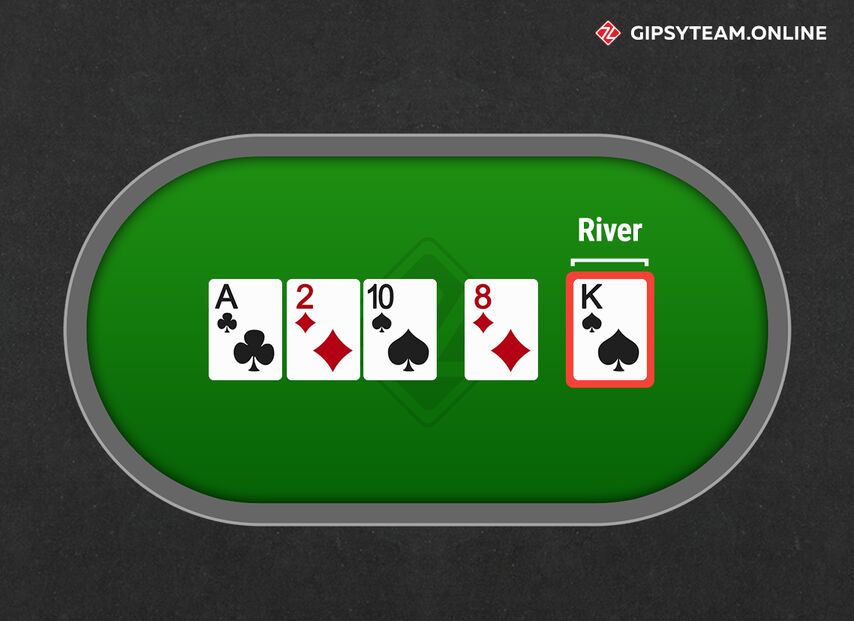
The Showdown
This isn’t a betting street, but it will decide the winner of the hand. When the river action concludes, players must turn over their hands in order. The dealer will compare the hand rankings and send the chips to the winner.
How To Bet In Poker
Always have a goal when making a bet. Consider the reason you are betting, and what it will achieve. This is when betting becomes like storytelling.
If you’re trying to bluff, the story you tell with your bets has to make sense. Great poker players represent hands very believably by telling a tale, with or without betting.
If you aren’t bluffing and you want to get paid by your opponent, consider things from their perspective. Sometimes the best way to get paid with your premium hands is to act weak, and let your opponent do the betting for you.
Betting Vocabulary
Whether it’s on Youtube, television, or around your friends, you’ll hear lots of poker jargon. It’s important to start learning these terms, as they’ll help you understand and speak about poker.
| Betting Vocabulary | What It Means |
|---|---|
| Raise | Instead of calling, you raise the amount that other players need to pay. At the beginning of the hand, this is 2x the big blind value. |
| Reraise | Another player has raised, but you choose to raise again. This can be useful for bluffing stronger opponents or for extracting more value from weaker opponents. |
| 3-Bet | This is the 3rd raise. There has been a raise, a reraise, and now you raise again. |
| 4-Bet | This is the 4th raise. You’ll sometimes see 5-bets as well, but they are uncommon. |
| Min-Raise / Click Back | You raise the minimum amount; if the big blind is $1, you put in $2 to make a minimum raise. This is more common pre-flop and on the flop, but less common on later betting streets. |
| Continuation Bet/C-Bet | If a player has raised before the flop, it’s typical to continue betting on the flop. This is called a continuation bet because the trend of betting is continuing. |
| Stealing The Pot | When players have folded behind you, and you are in a late position, you might be able to steal the pot. If you put on the right amount of pressure, maybe you can escape with some stolen blinds. This can be very profitable when you think your opponents are weak. |
| Squeeze/Isolate | Playing a pot with 9 other players decreases your odds of winning. It’s a good idea to play your premium hands against the smallest amount of players possible, to reduce variance. A large bet at the right time can make a few opponents fold and boost your odds. |
| Limp/Limping | Limping is a pre-flop term. Players call the big blind, instead of entering with a raise, which is preferable. Unless you are planning to set a trap, limping shows weakness. |
| Shoving/All In | Shoving comes from the movement players make when pushing all of their chips into the pot. All in means that all of your chips are committed to the pot, and there is no more action for you to take. It’s either a display of strength or an attempt to bluff opponents. All-in rules differ in Omaha and Texas hold ‘em formats. |
Poker Hand Rankings
It’s important to know your hand’s ranking, but it’s also crucial to guess your opponent's hand ranking. By using the information at the table, you’ll have to judge if your hand is a winning hand or a losing hand.
Good players know the probability of making these hand combinations. You’ll slowly get a better idea of the odds, which will massively help you. Once you know these probabilities, you can decide when to invest money into hands, and when to fold them.
Starting from the weakest poker hands and moving up to the most premium, here are the hand rankings. These rankings apply to Omaha and Texas hold ‘em formats.
| Hand | Explanation |
|---|---|
| No Pair – High Card | Sometimes everything misses and nobody creates a hand. In this case, your highest cards will be measured against your opponent’s cards. If you have higher cards than your opponent, you’ve won. |
| One Pair | One of your cards matches one of the community cards. |
| Two Pair | Make two separate pairs using your cards, or the community cards. You might have a pair in your hand, as well as a pair inside the community cards. |
| Three Of A Kind/Set | You have three of the same cards. When you have a pair in your hand and it matches a community card, this is called a set. When one of your cards matches two of the community cards, totaling three matching cards, that is called three-of-a-kind (also known as “trips”). |
| Straight | 5 consecutive cards, for example, 5 to 9 or 10 to ace. |
| Flush | 5 cards of the same suit, for example, 5 hearts or 5 spades. |
| Full House/Boat | 3 cards of the same value, plus a pair. For example, two aces and three kings. |
| Four Of A Kind/Quads | 4 cards of the same value. |
| Straight Flush | Extremely strong and extremely rare. 5 consecutive cards of the same suit. A straight flush is a straight, combined with a flush. |
| Royal Flush | A royal flush is a 10, jack, queen, king, and ace, all of the same suit. |
The Importance Of Player Position
When learning how to play poker, most players don’t fully understand how valuable their table position is. Let’s focus on it for a moment.
Strategy changes depending on where you sit, never forget that. If you are first to act, or in an early position, you have a disadvantage over players in later positions. This makes it more difficult to profit from your premium hands, and more difficult to bluff your opponents too.
The majority of a poker player’s wins usually come from a late or middle position. We are going to look at each table position and discuss its strengths and shortcomings.
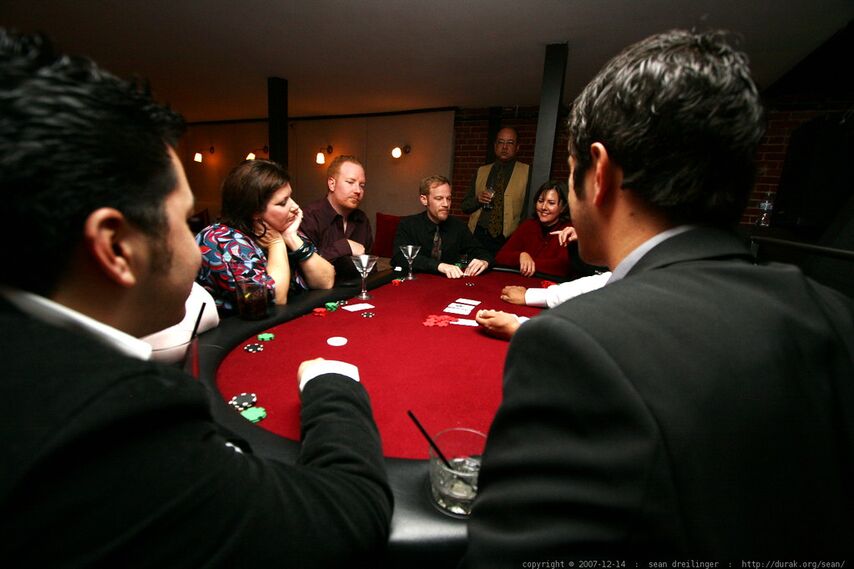
The Button
Acting last on every betting street is immensely powerful. Players will be more cautious with their bets, and you’ll get lots of information before you make your moves. Because of this advantage, players become “looser” in this position, and play a wider range of hands.
The Small Blind
This is a tricky position to win from. You are first to act after the flop, and second last to act before the flop. Betting from this position is very risky, as you have the entire table behind you. You also haven’t seen other players act, so you are working with limited information. On the flip side, betting from this position can look incredibly strong.
The Big Blind
To the left of the SB is the big blind. The BB player puts money in before seeing their cards, and they have the same positional disadvantage that the small blind has.
Under The Gun
The players UTG are the first players to the left of the big blind. There’s a range of starting hands that can be profitable from this position. Since UTG is in an early position, we will have players to act behind us, making it a slightly vulnerable spot.
Middle Position
The range of the MP players is wider than UTG players because the position is slightly better. We have fewer players acting behind us, so we can afford to profitably raise more hands.
Cut-Off
Second last to act, except pre-flop, the CO is in a powerful position. From here you can steal the blinds by raising and entering the pot with a wide range of hands. Many players treat this position like the button position.
3 Ways To Quickly Improve And Win More
We live in a world where poker resources are just a few keystrokes away. Here are 3 ways to iron out problems with your poker strategy and start winning more pots.
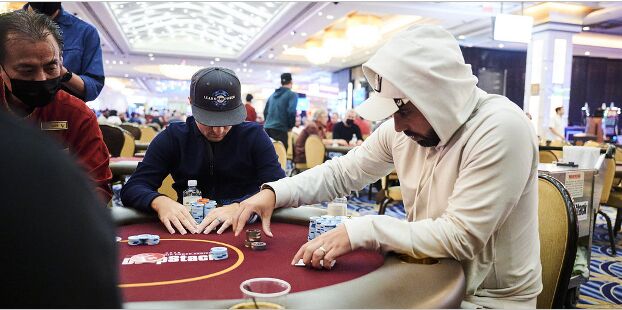
1. Hiring A Poker Coach
If you’re serious about improving your poker, hiring a coach is like hopping in the fast lane. The services aren’t free, but personalized teaching is invaluable. It’s the quickest, yet most expensive way to learn how to play poker.
The downside is that coaches can cost hundreds per hour or even more for certain coaches. I’d recommend coaching for players who understand the fundamentals and are ready for more nuance and deep strategy.
2. Free Poker Content
- Youtube and Twitch are loaded with online and offline poker content. Find pros multi-tabling on Twitch or follow your favorite players’ Youtube channels. Find a player who provides commentary and insight while they play.
- Reddit is a great forum for discussion on everything poker-related. Get involved and start discussing with other players of varying skill levels.
- Free poker courses are just one Google search away. They won’t teach you everything you need to become the next Chris Moneymaker, but you’ll notice improvements.
3. Practice With Low Stakes Or Freeplay
A few poker sites reviewed by GipsyTeam offer free-play and play money options. You can play Texas hold ‘em or Omaha, but don’t make strong comparisons between real money and free-play poker. If the chips don’t have any value, then the players will be incredibly loose and might not implement a real strategy.
Partypoker and PokerStars both offer free-play tournaments, sit & go’s, and cash games.
Poker at the low-stakes level will build your skills affordably. You can buy into cash games for a few dollars and acclimatize to real money poker.
Online Poker Sites With Soft Competition
When we tested major poker sites, we found that 888poker and partypoker have softer competition, compared to other providers.
As a general rule, the higher the stakes are, the tougher the competition can be. Things become more serious and there is more to be lost and gained, which attracts professionals and grinders.
Start playing at the lowest limit, usually around $0.01/$0.02 stakes, and work your way up as you feel more comfortable. Remember to pace yourself, and do not play higher stakes than you are comfortable with.


















